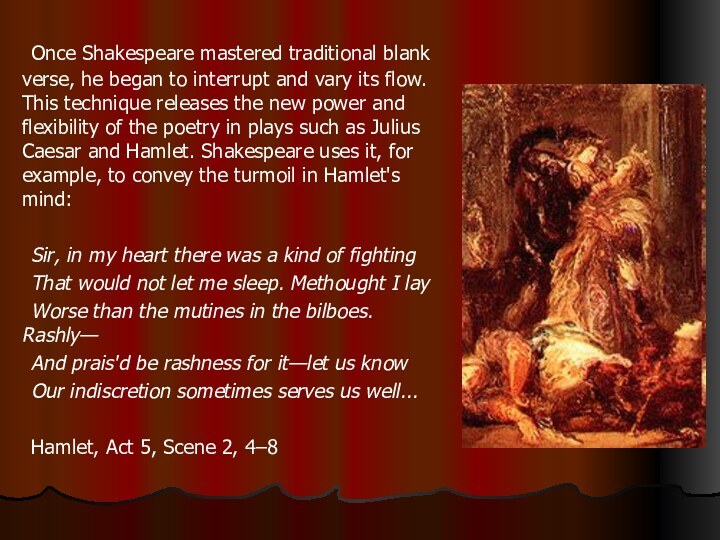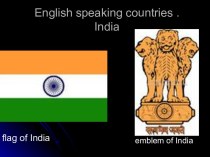- Главная
- Разное
- Бизнес и предпринимательство
- Образование
- Развлечения
- Государство
- Спорт
- Графика
- Культурология
- Еда и кулинария
- Лингвистика
- Религиоведение
- Черчение
- Физкультура
- ИЗО
- Психология
- Социология
- Английский язык
- Астрономия
- Алгебра
- Биология
- География
- Геометрия
- Детские презентации
- Информатика
- История
- Литература
- Маркетинг
- Математика
- Медицина
- Менеджмент
- Музыка
- МХК
- Немецкий язык
- ОБЖ
- Обществознание
- Окружающий мир
- Педагогика
- Русский язык
- Технология
- Физика
- Философия
- Химия
- Шаблоны, картинки для презентаций
- Экология
- Экономика
- Юриспруденция
Что такое findslide.org?
FindSlide.org - это сайт презентаций, докладов, шаблонов в формате PowerPoint.
Обратная связь
Email: Нажмите что бы посмотреть
Презентация на тему The language of Hamlet
Содержание
- 2. William Shakespeare was an English poet and
- 3. Many critics believe that Shakespeare's greatest tragedies
- 4. Shakespeare’s poetic form Shakespeare's standard poetic form was
- 5. Once Shakespeare mastered traditional blank verse, he
- 6. The Tragical History of Hamlet, Prince of
- 7. Dramatic structure Hamlet departed from contemporary dramatic
- 8. Finally, in a period when most plays
- 9. Language Compared with language in a modern
- 10. Much of Hamlet's language is courtly: elaborate,
- 11. Hamlet is the most skilled of all
- 12. In contrast, when occasion demands, he is
- 13. At times, he relies heavily on puns
- 14. An unusual rhetorical device, hendiadys, appears in
- 15. Many scholars have found it odd that
- 16. Скачать презентацию
- 17. Похожие презентации
William Shakespeare was an English poet and playwright, widely regarded as the greatest writer in the English language and the world's pre-eminent dramatist. He is often called England's national poet and the "Bard of Avon". His
















Слайд 3 Many critics believe that Shakespeare's greatest tragedies represent
the peak of his art. The titular hero of
one of Shakespeare's most famous tragedies, Hamlet, has probably been discussed more than any other Shakespearean character, especially for his famous soliloquy "To be or not to be; that is the question".
Слайд 4
Shakespeare’s poetic form
Shakespeare's standard poetic form was blank
verse, composed in iambic pentameter. In practice, this meant
that his verse was usually unrhymed and consisted of ten syllables to a line, spoken with a stress on every second syllable. The blank verse of his early plays is quite different from that of his later ones. It is often beautiful, but its sentences tend to start, pause, and finish at the end of lines, with the risk of monotony.Слайд 5 Once Shakespeare mastered traditional blank verse, he began
to interrupt and vary its flow. This technique releases
the new power and flexibility of the poetry in plays such as Julius Caesar and Hamlet. Shakespeare uses it, for example, to convey the turmoil in Hamlet's mind:Sir, in my heart there was a kind of fighting
That would not let me sleep. Methought I lay
Worse than the mutines in the bilboes. Rashly—
And prais'd be rashness for it—let us know
Our indiscretion sometimes serves us well...
Hamlet, Act 5, Scene 2, 4–8





























